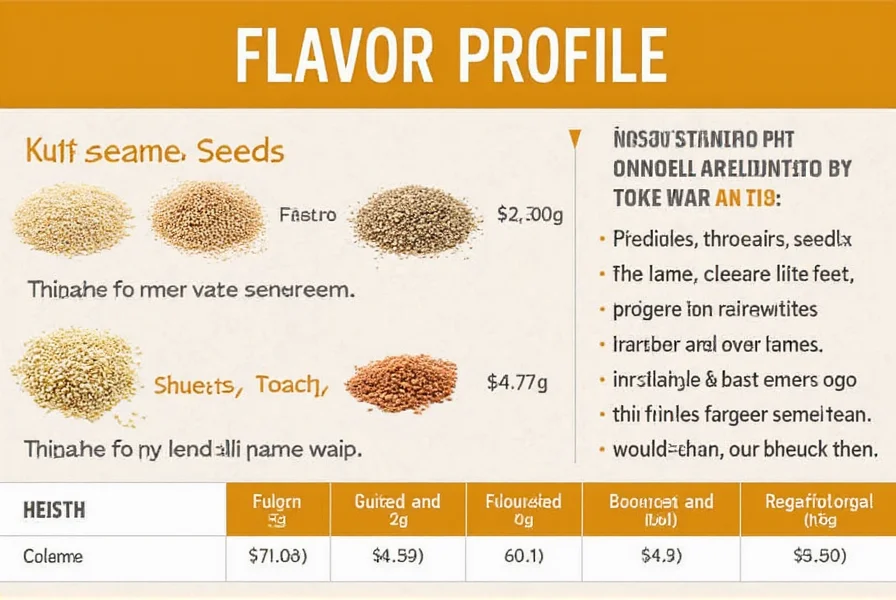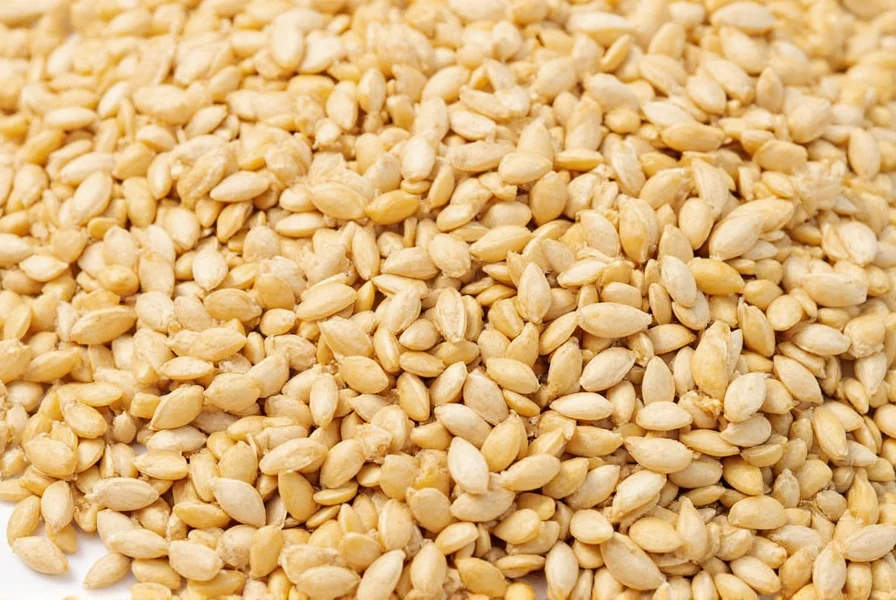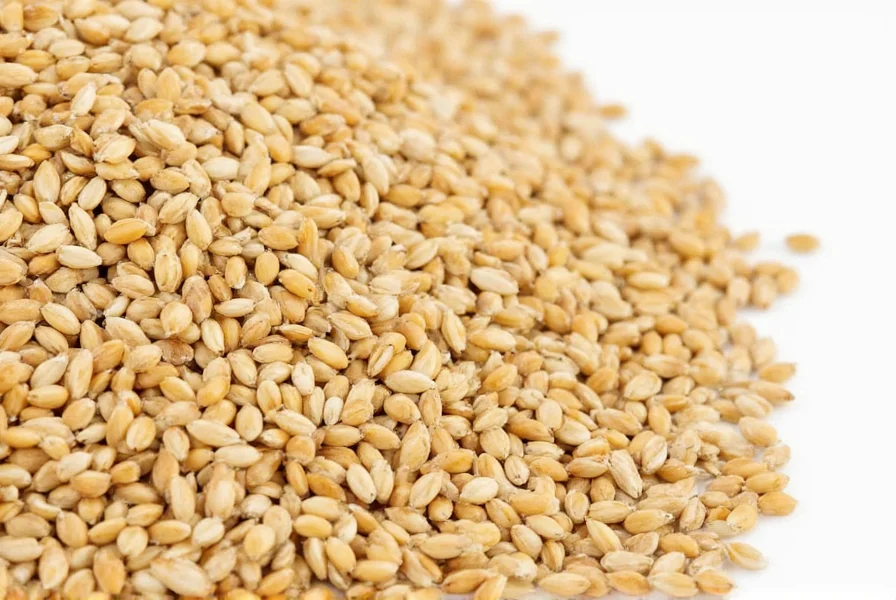Sesame seeds are culinary chameleons whose flavor profile evolves dramatically based on preparation. Understanding their taste characteristics helps unlock their full potential in global cuisines. Let's explore the nuanced flavor journey of these ancient seeds.
The Basic Flavor Profile of Raw Sesame Seeds
Raw sesame seeds possess a naturally mild flavor that serves as a blank canvas for culinary creativity. Their baseline taste includes:
- A subtle nuttiness reminiscent of almonds or pine nuts
- Faint earthy undertones
- Minimal natural sweetness
- Nearly imperceptible bitterness
- Creamy mouthfeel when chewed
This neutral foundation explains why sesame seeds appear in diverse culinary traditions worldwide—they enhance rather than dominate dishes. When evaluating what is the flavor profile of sesame seeds, their versatility becomes immediately apparent.
How Toasting Transforms Sesame Seed Flavor
The magic happens when sesame seeds meet heat. Toasting triggers the Maillard reaction, creating complex flavor compounds:
| Preparation Method | Flavor Characteristics | Culinary Applications |
|---|---|---|
| Raw sesame seeds | Mild, slightly sweet, neutral | Baking, doughs, uncooked sauces |
| Lightly toasted | Nutty, warm, aromatic | Salad toppings, rice dishes |
| Deep toasted | Rich, smoky, coffee-like notes | Sesame oil, tahini, dressings |
Professional chefs often toast sesame seeds in a dry skillet over medium heat for 2-4 minutes until they turn golden brown and emit a fragrant aroma. This simple technique answers the common question about how do toasted sesame seeds taste different from their raw counterparts—they develop up to 30% more complex flavor compounds through the toasting process.

White vs Black Sesame Seeds: A Taste Comparison
While both varieties come from the same plant (Sesamum indicum), their flavor profiles differ significantly:
White Sesame Seeds
After hulling removes the outer bran layer, white sesame seeds deliver:
- Milder, more delicate flavor
- Subtle sweetness
- Creamier texture
- Less pronounced nuttiness
- Ideal for lighter-colored dishes and sauces
Black Sesame Seeds
With their intact bran layer, black sesame seeds offer:
- Stronger, more robust flavor
- Noticeable bitter notes
- Distinct mineral undertones
- Higher concentration of antioxidants
- Traditional use in Asian desserts and medicinal preparations
When exploring white sesame seeds vs black sesame seeds taste differences, many chefs recommend using black sesame seeds sparingly due to their intense flavor profile. They're particularly valued in East Asian cuisines for both taste and visual contrast.
Culinary Applications Based on Flavor Profiles
Understanding sesame seed flavors allows for strategic culinary applications:
Raw Seed Applications
Use raw sesame seeds when you want:
- Neutral background flavor
- Visual appeal without strong taste
- Texture contrast in baked goods
- Examples: Bagel toppings, bread coatings, uncooked energy bars
Toast Seed Applications
Choose toasted sesame seeds when you need:
- Flavor prominence
- Aromatic qualities
- Richness in sauces and dressings
- Examples: Gomashio seasoning, tahini sauce, stir-fry finishes

Global Flavor Interpretations
Culinary traditions worldwide have developed distinctive approaches to sesame seed flavors:
- Middle Eastern: Tahini transforms toasted sesame seeds into a creamy, nutty paste with lemony brightness when prepared properly
- East Asian: Goma (toasted sesame) seasoning balances sweet, salty, and nutty elements in Japanese cuisine
- Mediterranean: Halva showcases sesame's natural sweetness when combined with sugar or honey
- African: Traditional grinding techniques preserve more of the seed's natural oils and flavors
When considering how sesame seeds taste in different cuisines, regional preparation methods significantly influence the final flavor experience. The same seed can taste dramatically different depending on cultural preparation techniques.
Practical Tips for Maximizing Sesame Flavor
Follow these professional techniques to optimize sesame seed taste:
- Toast in small batches: Use a dry skillet over medium-low heat, stirring constantly
- Watch for color change: Remove from heat when golden (they continue cooking off-heat)
- Cool completely: Before storing or using to preserve flavor compounds
- Grind fresh: For sauces and dressings, grind just before use for maximum aroma
- Store properly: Keep in airtight container in refrigerator to prevent rancidity
Understanding why sesame seeds taste better when toasted comes down to chemistry—heat releases volatile compounds that create the characteristic nutty aroma while reducing natural enzyme inhibitors that can create bitterness.
Nutritional Context and Flavor Relationship
Sesame seeds' nutritional composition directly influences their flavor profile:
- High oil content (45-60%) contributes to rich mouthfeel
- Natural antioxidants prevent rancidity while adding subtle complexity
- Calcium and magnesium provide mineral notes, especially in unhulled varieties
- Protein content creates satisfying texture and umami potential
When evaluating what gives sesame seeds their distinctive taste, the combination of healthy fats, proteins, and minerals creates a uniquely balanced flavor profile that works across sweet and savory applications.











 浙公网安备
33010002000092号
浙公网安备
33010002000092号 浙B2-20120091-4
浙B2-20120091-4